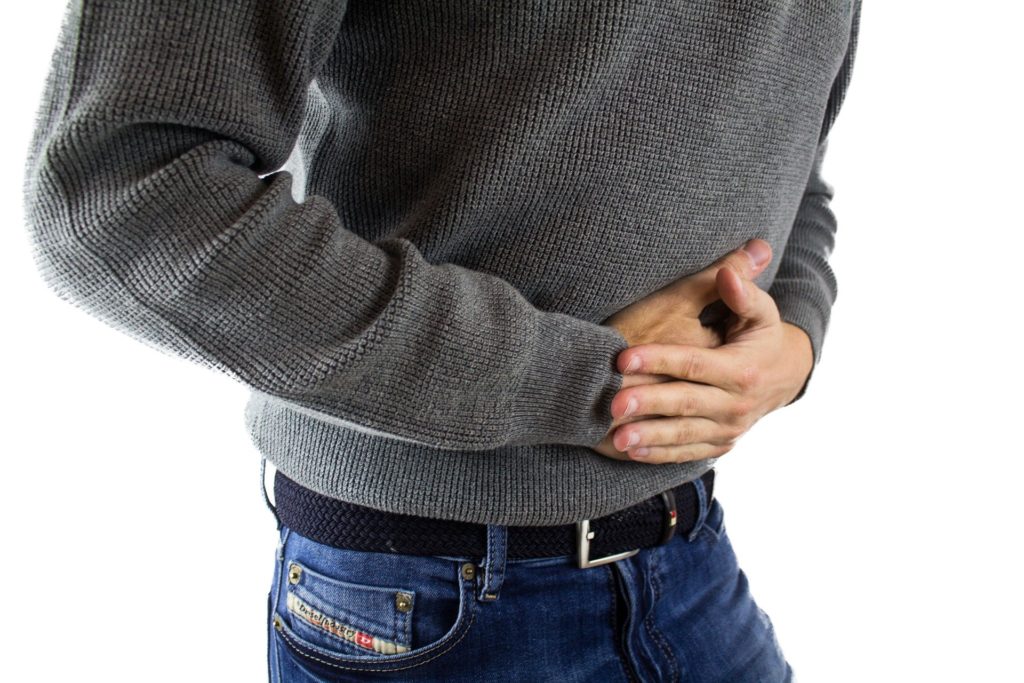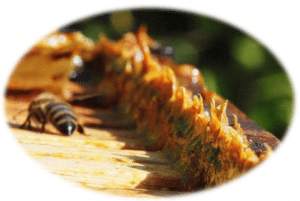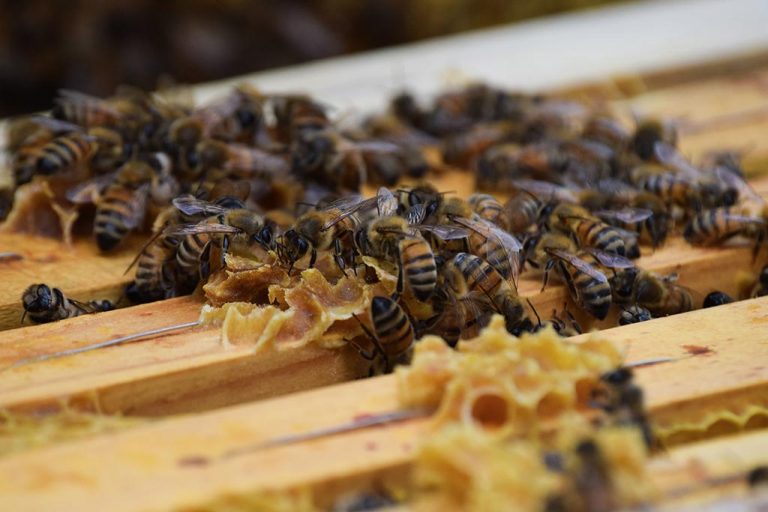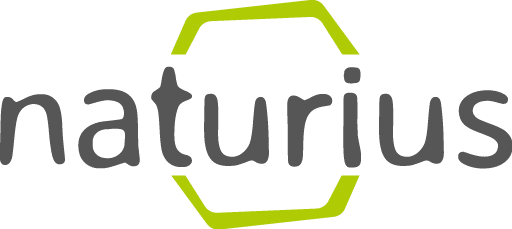Was ist Antibiotika?
Antibiotika ist ein Medikament, das bei Erkrankungen, die durch Bakterien verursacht werden, eingesetzt wird. Antibiotika hat zwei Wirkungsweisen, manche Antibiotika töten Bakterien ab, andere verhindern, dass sich die Bakterien weiter vermehren können. Leider wirkt es nicht nur gegen schädliche Bakterien sondern auch gegen nützliche Bakterien im Körper. Deshalb ist es sehr wichtig, dass Antibiotika nur dann eingesetzt werden, wenn es wirklich notwendig ist.
Die typischen Nebenwirkungen von Antibiotika sind Magen-Darm-Beschwerden, eine Pilz-Infektion oder eine allergische Reaktion. Außerdem fällt immer wieder das Stichwort Antibiotikaresistenzen. Je häufiger Antibiotika eingesetzt wird, desto höher ist das Risiko, dass sich resistente Bakterien entwickeln und ausbreiten. Multiresistente Keime waren auch auf dem Gipfel der G20 Staaten 2017 ein Thema. Es soll einen neuen, gemeinsamen Fond geben für Forscher um ein neues Mittel zu entwickeln.
Oft wird Antibiotika benutzt, wenn es eigentlich gar nicht nötig wäre. Gegen Viren zum Beispiel, richtet es nichts aus, es wirkt nur auf Bakteriophagen. Zusätzlich hat es natürlich auch antibiotische, unerwünschte Wirkung auf die Darmflora, diese wird in Mitleidenschaft gezogen, und muss anschließend wieder aufgebaut werden. Viele Menschen sind auf der Suche nach einem Antibiotika Ersatz, am Besten einen natürlichen.

Propolis als natürliche Alternative zu Antibiotika

Eine Alternative bietet hier Propolis, denn unter den in der Pharmakologie bekannten Naturprodukten, d.h. Produkten mit heilender Wirkung aus dem Pflanzen- oder Tierreich, spielt das von Bienen aus der Pflanzenknospe gesammelte Propolis eine führende Rolle. Es handelt sich dabei um eine harzige, wachsige, balsamische Substanz, die hauptsächlich aus Flavonoiden, Hydroxydsäuren, aromatischen Aldehyden und Alkoholen und ätherischen Ölen und Terpenen besteht. Zuerst wurde bei Flavonoiden eine heilende Wirkung entdeckt: es schützte die Durchlässigkeit der Blut- und Lymphkapillargefäße und wurde bald darauf als Vitamin P bezeichnet. (Durchlässigkeitsfaktor). Außer diesem Kapillargefäßschutz wurden später viele weitere Wirkungen der Flavonoiden nachgewiesen.
Wirkung von Propolis, eine Zusammenfassung der Studienlage

Im folgenden Abschnitt finden sie die Ergebnisse zur der Wirkung von Propolis aus einigen Studien zusammengefasst. Die vollständigen Studien finden sie im Quellenverzeichnis.
- 1. Verbesserte Ausscheidung der Verdauungssäfte und verbesserte intestinale Peristaltik
- 2. Antidepressivum durch eine koffein-ähnliche Wirkung
- 3. Vorbeugung von Senilität durch anti-oxidierende Wirkung und Aktivierung des sogenannten P-450 Komplexes
- 4. Ermüdungshemmend durch Hemmung der toxischen Wirkung der Milchsäure in den Muskeln
- 5. Diuretisch durch Hemmung der Nieren – Phosphatase
- 6. Fördert die Aufnahme von Vitamin C (Ascorbinsäure) und wird dadurch auch als Vitamin C2 bezeichnet
- 7. Fördert die zelluläre Kalzium-Aufnahme
- 8. Entzündungshemmend bei entzündlichen Prozessen der Schleimhäute, der Haut und Gelenke
- 9. Bakterien eindämmend, Antibiotikum gegen viele Mikroorganismen
- 10. Vorbeugung von Helminthen
- 11. Entgiftet einige Arzneimittel.
Folgt man Angaben aus der Literatur, zeigt Propolis bei Anwendung im biologischen Bereich und in der Humanpathologie eine vielschichtige Wirkung, sowohl als natürliches Antibiotikum gegen viele Krankheitserreger, als auch als biologischer Regel- und Stimulationsfaktor bei Abwehrprozessen des Organismus. Somit kann es in der Naturheilkunde auch einfach nur als Nahrungszusatz zur Erhaltung der allgemeinen Gesundheit verabreicht werden. Synthetisch betrachtet hat Propolis folgende Wirkungen:
- 12. Schutzwirkung – bindet freie Radikale
- 13. Anti-oxidierend, schützt Lebensmittel vor dem Ranzigwerden, Konservierung von Lebensmitteln
- 14. Eindämmung von Bakterien und Viren, Antibiotikum, Vorbeugung von Mykosen – natürliches Antibiotikum
- 15. Fördert Vernarbungen und Gewebeerneuerung, besonders im Epithel- und Knochenbereich – bessere Wundheilung
- 16. lmmunostimulant – Immunsystemfördernd
-
17. Anästhetisierende Wirkung – schmerzstillend bei Entzündungen
=> ln der Praxis konnten positive Ergebnisse mit Propolis in Alkohol- und Wasserlösungen bei folgenden Fällen beobachtet werden - 18. Intestinaler Dismikrobismus und Infektionen der Harnwege durch Koli- und Proteusbakterien;
- 19. Rachenkatarrh verursacht durch Candida Albicana, Streptococcus betahaemolyticus und Staphylococcus coagulasi positiv mit Normalisierung des Anti-Streptokokkenhämolysin und Anti-Staphilokokkenhämolysin Titers.
- 20. Grippale und katarrhe Erkrankungen der Atemwege
- 22. Asthma und andere Atemwegserkrankungen
Zusammenfassung
All diese positiven Auswirkungen können mit dem Propolisverdampfer ohne tägliche Einnahme erreicht werden! Es wurde eine qualitative Analyse des flüchtigen Teils des Propolis nach der stufenweise Fixierung der flüchtigen Teile des reinen Propolis durchgeführt; die Propolis-Kapseln mit ihren Komponenten sind mit der Verwendung des Kontak Flugzerstäuber Geräts und Zerteilung durch der Erwärmung bemustert worden.
Überzeugen Sie sich selbst und testen Sie unsere Produkte!
Quellen:
1. Ammon H.P.T, Mack T., Singh G. B.,Safayhi H.- Inhibition of leukotriene 84 formation in rat per neal neutrophils by an ethanolic extract of the gum resin exudate of Boswellia serrata. Planta Med 57 : 203-298, 1991.
2, Ammon H.P.T., Safayhi H, Singh G.B.,-Verwendung von reiner Boswelliasäure . Europäische Patentanmeldung no 93’1 00398.2 ; Patentblatt 93/30: Anmelde-tag : 13.01.93.
3 Amoros M., Simoes C.M.O., Girre L., Sauvager F., Cormier M.- Synergistic effect of flavones andflavonols against herpes simplex virus type 1 in cell culture. Comparison with the antiviral activity of propolis. J. Nat. Prod. 55: 17.32-40. 1992.
4 Amoros M., Lurton E., Boustie J., Girre L., Sauvager F., Cormier M. – Comparison of antiherpes simplex virus activity of propolis and 3- methylbut-2-enyl catfeate. J. Nat. Prod. 57: 644-647, 1994. et Bankova V.S., Popov S.S., Marckov N.L.- A study on flavonoids of propolis. J. Nat. Prod. 46: 471-474, 1983.
5 Bankova V., Popov S., Marckov N. -On the chemical composition of some propolis fraction with antiviral action. Acta Microbiol. Bulg 23: 52-57, 1988.
6. Billingham M.E.J., Davies G.E., – Anti-inflammatory drugs. Experimental models of arthritis in animals as screening tests for drugs to treat arthritis in man. (Ed. Vane J.R., Ferreira S.H.), Berlin, Heidelberg, New York, Springer 1979: 108-144.
8. Cizmarik J., Matel 1.- Examination of the chemical composition of propolis. I. Isolation and
identification of the 3,4-dihydroxycinnamic acid ( caffeic acid ) from propolis. Experientia 26:713, 1970.
9 Cizmarik J., Matel I. -Examination of the chemical composition of propolis .II. Isolation and ldentification of 4-hydroxy-3-methoxycinnamic acid ( ferulic acid ). From Propolis. J. Apic. Res. 12: 63- 65, 1973.
10 Cizmarik J., Trupl I. – L’action de Ia propolis sur les levures. xxvo Congres International d’Apicolture. Grenoble 1975.
11 Crane E.- Bees and beekeeping, science, practice and world resourses. Cornell University Press 1990 :368-370.
12. Debuyser E.- La propolis. Docteur en Pharmacie Thesis, Universite de Nantes, France 1983: 82.
13, Detoma P., Ozino o.!.- Azione della propoli su microrganismi dell ‘ambiente ospedaliero. Ann Microbio l41: 231,1991.
14 Dirnov V., lvanovska N., Manolova N., Bankova V., Nikolov N., Popov S. -lmmunomodulatory action of propolis. lnfluence on anti-infectious protection and macrophage Function. Apidologie 22: 155-162, 1991.
15 Dirnov V., lvanovska N., Bankova V., Popov S. -lmmunomodulatory action of Propolis: IV. Prophylactic activity against gram-negative infections and adjuvant effect of the water-soluble derivative. Vaccine ‘i 0:8’17-23, 1992.
16 Dobrowolski J.W., Vohora S.B., Sharma K., Shah S.A., Naqvi S.A., Dandiya P.C.- Antibacterial, antifungal, antiamoemic, antiinflammatory and antipyretic studies on propolis bee products. J. Ethnopharmacol 35: 77-82, 1991.
17 Duwiejua lVI., Zeitlin I.J., \Naterman P.G., Chapman J., Mhango G.j., Provan G:J. -Antiinflammatory activity of resins from species of the plant family Burseracee. Planta Med. 59: 12-16, 1993.
18. Fabretto L, Gambolo P. -Metodo originale di estrazione dei componenti utili della propoli. Apicolt iViod. 82:193-197,1991.
19. Fernandez Jr. A., Sugizaki M.F., Fogo M.l., Lopez CAM., Funari S.R.C.- in vitro susceptibility of candida albicans to propolis. Proc. IV lbero-latinamerican Meeting Apic, Ministerio de agricoltura, Ganaderia y Recursos Renovables, Rio Cuarto, Argentina 1994 : 209-211.
20. Fuentes A.M.O., Hemandez N.R.- Aceion antimicrobiana de los extractos alcoholicos de propöleo. Rev. Cubana Farm. 24:34-44, 1990.
21 Ganora R.-Fiora Medica Etiopica. Archivio italiano di scienze Mediche Coloniali. Ed. Cappelli Bologna 1 0: 3, 1929.
22. Ger L.P., Liou S:H:; Shen C.Y., Kao S.J., Chen K.T. -Risk factors of lung cancer. J. Formos Med. Assoc. 91 (Suppl. 3P): S222-31, 1992.
23. Ghisalberti E.L.- Propolis: a review. Bee World 60: 59-84, 1979.
24. Ganzales A., Varela F., Hurtade 0., Cueto D.J. – Experiencia en angiologia. Mem I Simp. Efectos del Pröpoleo en Ia Salud Humana y Anima!, Varadero, Cuba 1988/89: 262-263.
25. Grange J.M., Devey R.W.- Antibacterial properties of propolis. JA Soc.Med. 83: 158-160, 1990.
26. Guarini L., Su Z.Z .. , ZuckerS., Lin J., Grünberger D., Fisher P.B.-Growth inhibition and modulation of antigenic phenotype in human melanoma and glioblastoma multiforme cells by caffeic acid phenethyl ester (CAPE). Cell. Mol. Biol. 38: 513-27, 1992.
27. Hemandez N.M.R. – Efecto antibiötico del propoleo frente a cepas de Staphylococcus aureus de origen clinico humane. Rev. Cubana Farm. 24: 45-50, 1990.
28 Holland 1., Miyares C., Sigarroa A. – Analisis comparativo entre Ia accion del propoleos, Ia sulfaquinoxalina y Ia sulfametacina en conejos afectados por coccidiosis. Rev. Cubana Cienc. Vet 19:99-104, 1988.
29. lkeno K.., lkeno T., Miyazawa C. – Effects of propolis on dental caries in rats. Caries. Res. 25 : 347-51, 1991.
30. Kedzia B., Holderna E. – lnvestigations on the combinated action of antibiotics and propolis on Staphylococcus aureus. Herba Pol. 32: 167-195, 1985.
31. Kedzia A. – Sensitivity of anaerobic bacteria to the ethanol extracts of propolis. Phitotherapie 6: 4-8, 1990.
32. Kesava Reddy G., Dhar S.C.- Effect of a new non steroidal anti-inflammatory agent on fisasomal stability in adjuvant inducend arthritis. The ltalian Journal of Biochemistry 36: 205-217, 1987.
33. Krol W., Czuba Z., Dcheller S., Gabrys J., Gabriec S., Shani J. – Antioxidant property of ethanolic extract of propolis (EEP) as evaluated by inhibiting the chemiluminescence oxidation of luminol. Bioehern lnf. 21: 593-597, 1990.
34. Kweifio-Okai G. – International Patent Classification N. C07 J63/00, A61 K 31/56, International Application published under the patent cooperation treaty (PCT), World intellectual Property Organisation – International Bureau. International Filing Data, 30 october 1992.
35. Lavie P. – Les substances antibacteriennes dans Ia colanie d’abeilles. Ann Abeille 3: 201-319, 1960.
36. Lavie P. – Les substances antibiotiques dans Ia colanie d. abeille. Masson et Cie, Paris 3 : 1-115, 1992.
37. Leca PA- La medicina egiziana. Ed. Ciba Geigy, 1985, 148-275.
38. Lindenfelser L.A. – Antibicrobial activity of Propolis. Am See Journal, 1967.
39. Lindenfelser L.A. – Am See J. 1967. 107: 90-92/130-131.38; Kohler F.D.B.R. Pat. 1958. ln: Sonomi A., Marletto F., Sianchi M. – L”impiego della propoli nell’alimentazione delle galline ovaiole. Avicoltura 45 (4): 43-55, 1976.
40. Marletto F., Ofivero G.- Ricerche su raccolta e utilizzazione della propoli da parte delle api. Apicolt. Mod. 72: 131-140, 1981.
41, Marcucci NI.C. – Propolis : chemical composition, biological properties and therapeutic activity. Apidologie 26: 83-99, 1995.
42. Meresta L., Meresta T.- Antibacterial activity of flavonois compounds of propolis, occurring in flora in Poland. Sull. Vet. lnst. Pularwy 28: 61-63 1984.
43, Metzner J., Bekemeier H., Paintz M., Schneidewind R. – On the antibicrobial activity of propolis and propolis constituents Pharmazie 34: 97-102, 1979.
44. Papay V., Soltesz M., Csizmadia B., Toth L.- Kulonbozo helirol szarmazo propolisz mintak kemiai es farmacologiai virsgalata. Acta Pharm Hung 57: 143-151, 1987.
45. Pepeljnjak S., Jalenjak F., Maysinger 0.- Flavonoid content in propolis extract and growth inhibition of bacillus subtilis. Pharmazie 40: 122-123, 1985.
46. Proserpio-Martelli. Elementi di fitocosmesi.Ed. GAS, EINECS lnventario Europeo, 197·1: 655.
4/!. Rangari V., Gupta V.N., Atal C.K .. – Synthesis, anti-inflammatory and anti-arthritic activity of newer ß- Boswellic acid derivatives. Indian Journal of Pharmaceutical Seiences 52: 158-160, 1990.
48. Safayhi H., Mack T., Sabieraj J., Anazodo M.l:, Subramanian l.R., Ammon H.P.T. – Soswellic acid: novel, specific, nonredox inhibitors of 5-lipoxygenase. The Journal of Pharmacology and Experimental Therapeutics 261: 1143-1148,1992.
49. Schneidewind E.M., Buege A., Kala H.,Metzner J, und Zscunke A. – Identifizierung eines aus Propolis isolierten, antibikrobiell wirksamen lnhaltsstoffes. Pharmazie 34: 103-6, 1979.
50. SerkedjievaJ., Manalova N., Bankova V.- Anti-influenza virus effect of some propolis constituents
and their analogues ( esters of substituded cinnamic acid). J. Nat. Prod. 55: 294-302, 1992.
51. Sharma M.L., Khajura A., Kaul A., Sing S., Sing G.S., Atal C.K. – Effect on salai guggal ex Boswellia serreta on cellular und humoral immune responses and leucocyte migration. Agents Actions 34: 161-164, 1988.
52. Sheller S., Szafiarski J., Tustanowski J., Nolewajka E., Stojko A. – Biological properties and clinical application of Propolis I. Arzneim Forsch Drug Res 27: 889-(90, 1977.
53. Sukhy H. Test a Ia Propolis dans le traitement de Ia trichomonase vaginale.Aaujourd’ hui L’apitherapie. Supplement au no 465, 1987.
54. Tomas-Barberan F.A., Garcia-Viguera C.,Vit-Oiivier P., Ferreres F.,Tomas- Lorente F. – Phytochemical evidence for the botanical origin of tropical Propolis from Venezuela. Phytochemistry 34; 191_’196, 1993.
55. Villanova R.V., Barbier M., Gonnet M., Lavie P. – Les flavonoides de Ia propolis. lsolement d”une substance bacteriostatique : Ia pinocembrine, Ann. lnst. Pasteur, Paris 1987/88.
56. Zielonka E. – Effects de Ia propolis en cours de traiternent d’arthrite rhumatoide avec ankylose et raideu des articulation de Ia colonne vertebrale, evaluations cliniques et de laboratoire. Aujourd’hui l’apitherapie S465: 41, 1987

